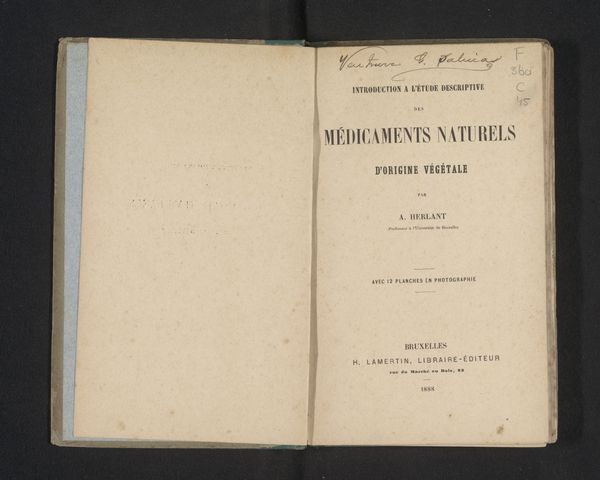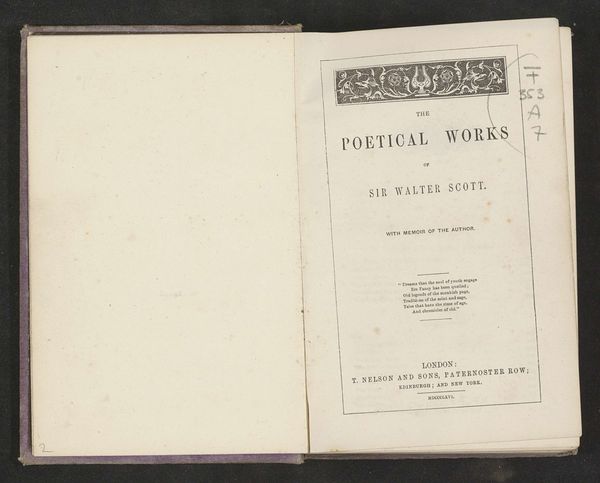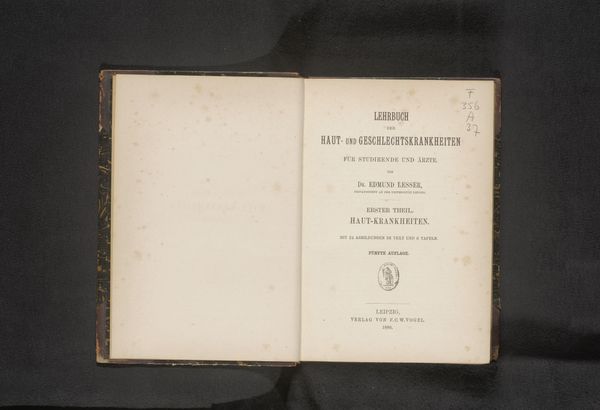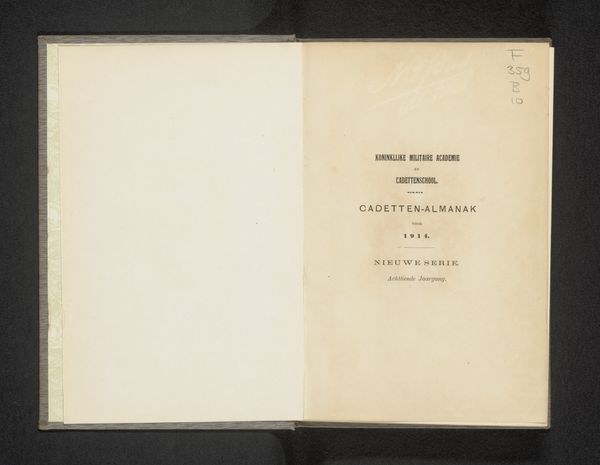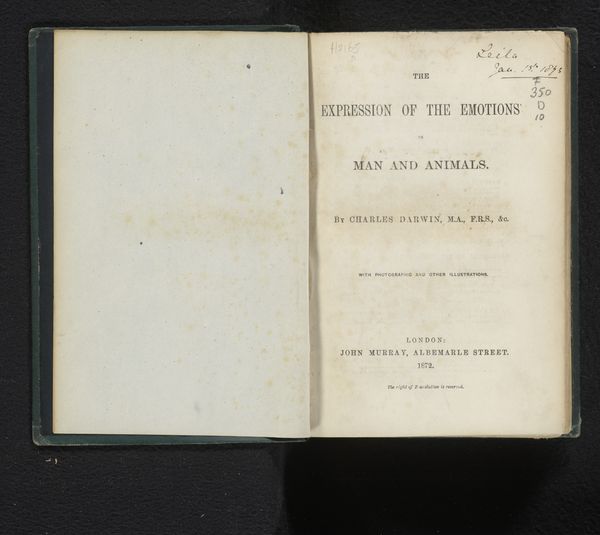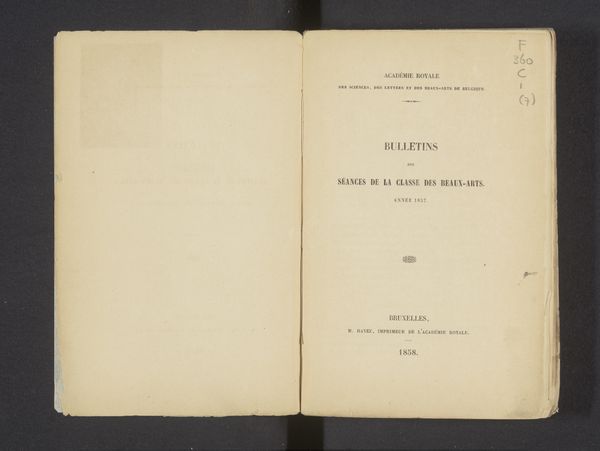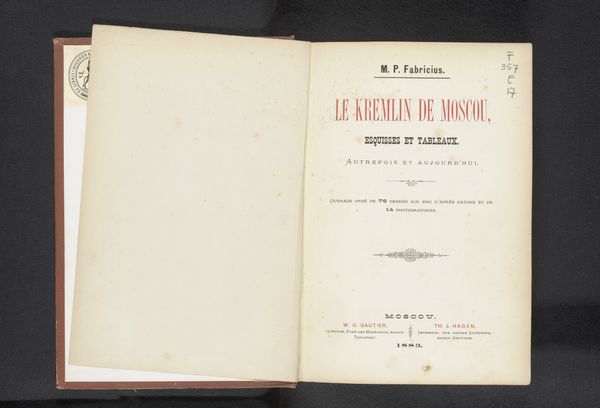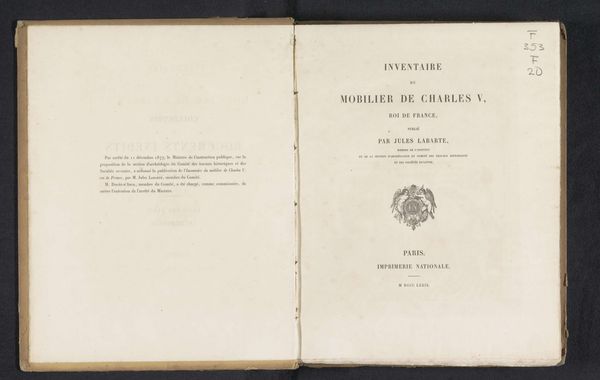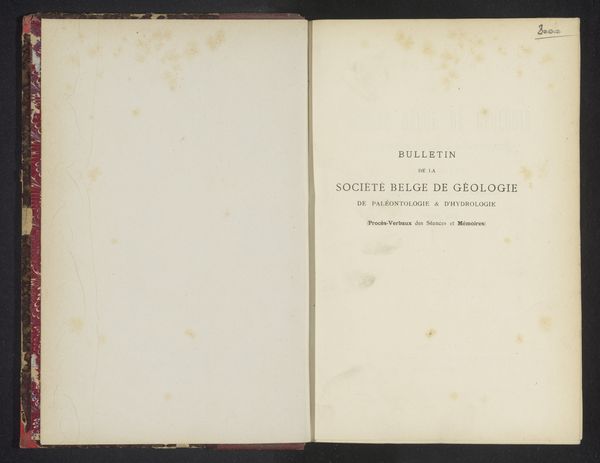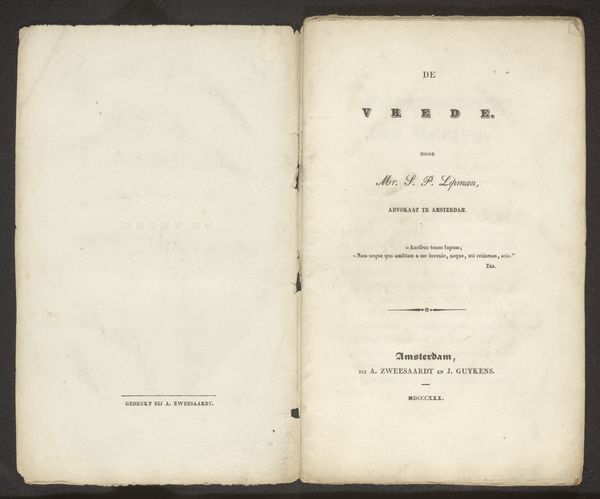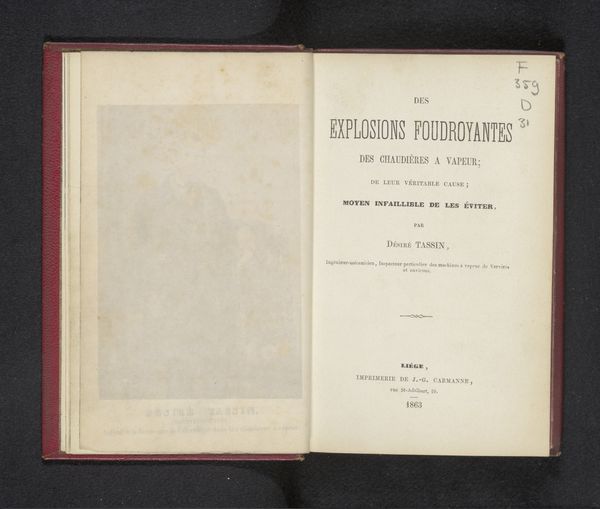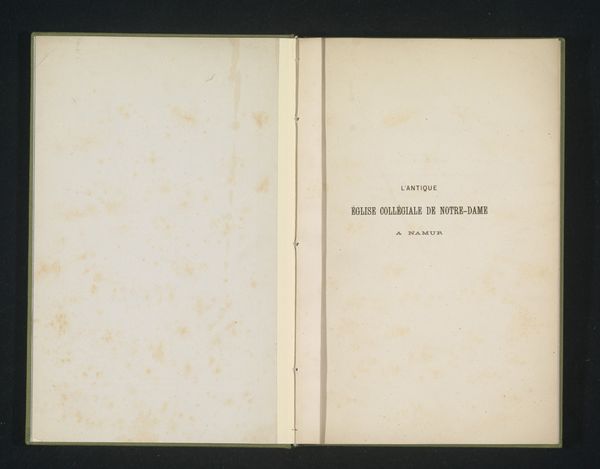
Essai sur les principes régissant l'administration de la justice aux Indes Orientales hollandaises surtout dans les îles de Java et de Madoura et leur application 1880
0:00
0:00
print, paper, photography
#
aged paper
#
homemade paper
#
paper non-digital material
#
paperlike
# print
#
sketch book
#
paper texture
#
paper
#
photography
#
personal sketchbook
#
folded paper
#
thick font
#
paper medium
Dimensions: height 225 mm, width 144 mm, thickness 20 mm
Copyright: Rijks Museum: Open Domain
Curator: This is the title page of "Essai sur les principes régissant l'administration de la justice aux Indes Orientales hollandaises surtout dans les îles de Java et de Madoura et leur application" dating back to 1880. Editor: What strikes me first is the tactile quality, or at least the suggestion of it. The aged paper, the slightly irregular printing. It has an immediate physical presence. Curator: Indeed. It’s a print, likely a lithograph, given the period, which allows for the detailed typography and the suggestion of texture. This publication speaks to a very specific historical and political context. Editor: I'm intrigued by the interplay of text sizes and fonts. How does that structure the viewer's attention, and potentially reinforce its arguments about legal administration? Curator: Well, think about it: This book aimed to codify and analyze the application of justice in the Dutch East Indies. The text hierarchy clearly delineates the "Essay" title, the main subject matter, the specific locations of Java and Madoura, down to the author and publishers, G.C.T. van Dorp & Co. in Samarang, and Scheltema & Holkema in Amsterdam. Editor: So the very layout underscores a hierarchical order, mirroring the colonial administration it describes? Curator: Precisely. The distribution points, the emphasis on the administration of law—everything reinforces Dutch control in the region. Consider too, the stark contrast between the clean, structured typography and the paper’s natural imperfections. Editor: It almost romanticizes a tension between order and the realities of governing. A colonial power seeking to impose its logic onto a messy, human landscape. This object becomes a material manifestation of power dynamics. The very essence of formalism is reflected in these elements. Curator: That's an insightful connection. What seemed merely informative to an initial glance evolves to embody socio-political agendas and intentions. Editor: Absolutely. I'm seeing a reflection of how European powers visually codified their governance and, consequently, perpetuated colonial ideology through print and publication. Curator: And examining objects like this allows us to critically dissect those ideologies. Editor: A valuable intersection of form, text, and the heavy weight of history itself.
Comments
No comments
Be the first to comment and join the conversation on the ultimate creative platform.
